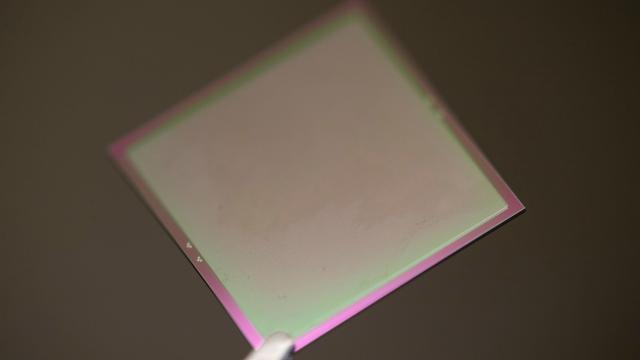Russia’s invasion of Ukraine is putting even more pressure on an already-strained global computer chip supply.
The military incursion has forced Ukraine’s two leading neon suppliers to suspend operations, a major disruption with global economic consequences. Neon is critically important to semiconductor chip manufacturing, and nearly half of the world’s semiconductor-grade neon originates from these two suppliers, Ingas and Cryoin, Reuters notes.
Reuters estimates the two firms produce between 45% and 54% of the specific type of neon needed to manufacture semiconductor chips. Under normal circumstances, Ingas pumps out 15,000 to 20,000 cubic meters of neon per month, with about 75% of that going directly into the chip industry. Global neon production reaches 540 metric tons per year, according to market research firm Techcet. While Cryoin halted operations on the day of the invasion, Ingas had managed to maintain production as Russian forces invaded, but it eventually halted operations this week due to the escalating conflict. That conflict hit close to home for Ingas on Wednesday when Russia’s military reportedly bombarded a maternity hospital in Mariupol, the city where Ingas is based, according to the World Health Organisation.
Those disruptions pose a dire threat to an industry that just began its path to recovery from two years of pandemic-related supply chain shortages. Shocks from those shortages have led to production delays of everything from Ford F-150s to Apple electronics and just about everything in between.
Techcet President Lita Shon-Roy warned a shortage of Ukrainian neon could disproportionately impact smaller chip makers in the near term.
“The largest chip fabricators, like Intel, Samsung and TSMC, have greater buying power and access to inventories that may cover them for longer periods of time, two months or more,” Shon-Roy told Reuters.
Access to semiconductors has already played an important role in war in Ukraine as the international community attempts to penalise and deter Russia. Days after Vladimir Putin’s initial invasion, Joe Biden’s administration issued new sanctions preventing the sale of U.S.-made semiconductors and other technology to the country with the ultimate aim of limiting the Russian military’s access to necessary tech. Japan, Taiwan, and South Korea followed up with similar restrictions.
The U.S. and other countries around the world responded to the shortage with attempts to ramp up at-home chip production, but most of those efforts will take years to bear any meaningful fruit. Even if those new chip facilities do manage to bolster individual nations’ self-sufficiency, shortages of key crucial elements like neon will still derail supply chains. And you don’t have to look far back to see the effects of a global neon shortage either. Neon prices saw a 600% price increase during Russia’s last conflict with Ukraine in 2014.
Shortages caused by the Russian invasion have already left a mark on other sectors of the economy. Oil prices spiked to a 14-year record high of $US139 ($193) per barrel this week. Gas prices in the U.S. reached an all-time high of $US4.331 per gallon on Friday, according to AAA, following news that the US would ban Russian oil imports.
